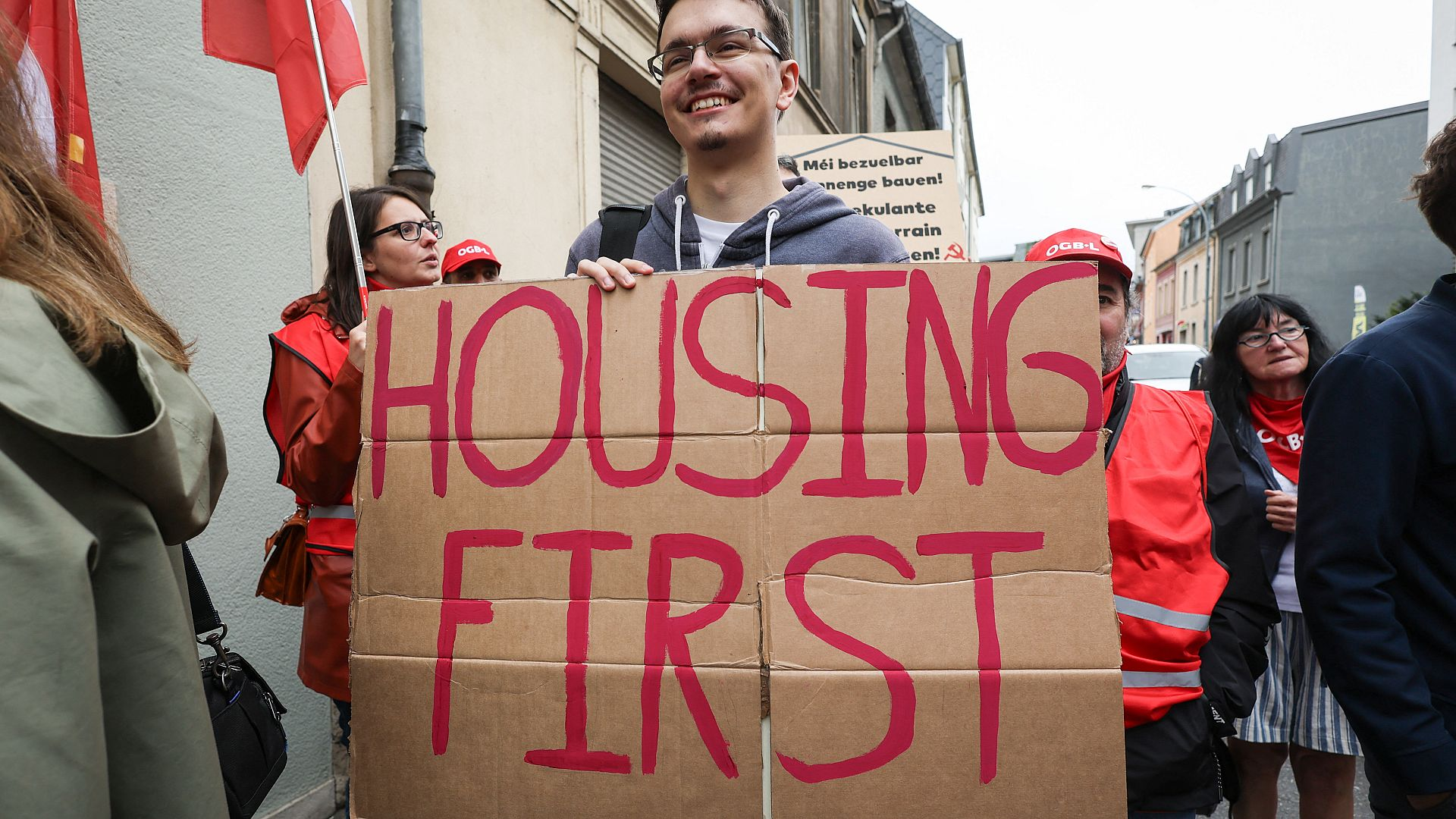The rising housing crisis in America is a pressing concern that has shaken the foundations of homeownership for countless individuals. With skyrocketing prices and mounting demand, housing affordability has become an elusive dream for many, sparking debates over land-use regulations and NIMBY policies that stifle construction productivity. As the cost of owning a home continues to double compared to previous decades, innovators in real estate are being challenged to respond to these barriers and find solutions. The intricate web of local restrictions not only hampers development but also hinders the potential for real estate innovation, leading to a systemic problem that affects all socio-economic layers. If society is to address the housing crisis effectively, it’s imperative to rethink our approach to construction and land use, fostering a more inclusive and productive environment for all.
Addressing the ongoing urban housing emergency requires a fresh perspective on how we define our living spaces and the regulations that govern them. The term “urban housing turmoil” encapsulates the complexity of issues around home affordability and the innovative approaches necessary to overcome restrictive building practices. As we delve into the challenges posed by outdated land management policies and the resistance to large-scale construction developments, it becomes clear that the future of housing hinges on our ability to adapt. Through examining alternative avenues for residential development, we can begin to unravel the constraints that currently obstruct progress in sustaining viable living options for all citizens. In this discussion, concepts like residential access and zoning reforms will be key in envisioning an equitable housing landscape.
Understanding the Housing Crisis: Root Causes and Consequences
The current housing crisis is rooted in a mix of factors that have converged over the years, leading to a significant decline in housing affordability across the United States. One of the primary issues is the enforcement of strict land-use regulations, commonly referred to as NIMBY (Not In My BackYard) policies, which restrict the potential for large-scale construction. These regulations inhibit builders from efficiently constructing homes en masse, which historically reduced costs through economies of scale. As a result, potential homeowners find themselves unable to afford homes, and the dream of ownership slips further out of reach.
In addition to stringent land-use regulations, rising labor and material costs have exacerbated the housing crisis. The historical data reveals a stark contrast between the construction sector and other industries like manufacturing, which has enjoyed significant productivity growth. This stagnation in the construction industry’s productivity has a direct impact on housing prices, as builders face higher costs while output remains limited. Consequently, the combination of regulatory constraints and economic pressures has created an environment where housing affordability has become an elusive goal for many, prompting urgent calls for policy reform.
The Impact of Land-Use Regulations on Construction Productivity
Land-use regulations play a crucial role in shaping construction productivity, often leading to smaller, less efficient projects that hinder overall industry innovation. Research indicates that as local policies become stricter, the size of housing developments tends to decrease, impacting the ability of builders to implement cost-saving technologies. This has resulted in a troubling trend where large-scale projects, like those seen in the post-war era, are increasingly rare. Without the ability to leverage the efficiencies of mass production, builders find innovation stifled, and costs continue to escalate, further complicating the housing crisis.
The decline in construction productivity can also be tied to a shift in developer dynamics, where smaller firms dominate the market in NIMBY-prone areas. These smaller firms, limited by local regulations, face challenges in investing resources into new technologies or production methods. In contrast, larger builders have historically utilized economies of scale to produce high-quality housing at lower prices, benefiting from streamlined processes. As we witness a depletion of substantial housing projects, the implications for housing availability and affordability are severe, revealing a need for systemic change in land-use policies.
Navigating the NIMBY Challenge: Strategies for Housing Development Reform
The rise of NIMBY sentiments has led to significant barriers in housing development, with communities often opposing new construction that could disrupt their neighborhoods. This ‘not in my backyard’ mentality has profound implications on housing supply, as local resistance can halt projects that would otherwise alleviate housing shortages. The challenge lies in balancing community concerns with the urgent need for new housing to accommodate growing populations and economic shifts.
Addressing the NIMBY challenge requires creative approaches to engage communities in the planning processes. Effective communication and collaboration can help demystify development plans and highlight their potential positives, like enhanced infrastructure and increased property values. Policymakers and developers should focus on transparent dialogue, demonstrating how new housing initiatives can meet community needs while fostering inclusive growth that benefits all residents.
The Future of Real Estate Innovation: Embracing Change for Sustainable Growth
Real estate innovation is crucial for navigating the complexities of the housing crisis. As affordability issues prevail, embracing advancements in construction methods and materials can lead to more sustainable and cost-effective housing solutions. Emphasizing modular construction techniques and prefabricated homes could potentially streamline processes and reduce costs, making housing more accessible to the average American.
Furthermore, real estate innovation goes beyond construction methods; it involves reimagining zoning laws and land-use regulations to allow for flexibility in development. Policymakers must consider the latest trends in urban planning and housing design to create environments conducive to growth. Collaborative efforts between tech innovators, builders, and local governments may encourage a new wave of housing solutions that prioritize affordability and sustainability, ultimately tackling the housing crisis head-on.
Reassessing Economic Growth: The Intergenerational Shift in Housing Wealth
The intergenerational transfer of wealth within the housing market has resulted in widening disparities in home equity across age groups. Data shows that younger generations are struggling to achieve the same levels of housing wealth as their predecessors, pointing to a systemic issue exacerbated by high housing costs and stagnant wage growth. Understanding this shift is crucial for developing solutions that promote equal opportunities for all age groups in the housing market.
To address these disparities, there is an urgent need for policy interventions that promote equitable access to homeownership. This may include revising financing options for first-time buyers or implementing housing vouchers that enable lower-income families to access desirable neighborhoods. The economic ramifications of the ongoing housing crisis underscore the importance of fostering inclusive housing policies that prevent intergenerational wealth gaps from becoming entrenched.
Adopting a Holistic Approach: Integrating Housing Affordability and Economic Policies
The housing crisis cannot be viewed in isolation; it is intrinsically linked to broader economic policies and societal trends. The rise of NIMBY policies, the stagnation of construction productivity, and the increasing difficulty in accessing affordable housing all contribute to the current state of the economy. It is essential that policymakers take a holistic approach in addressing these interconnected issues by integrating housing affordability initiatives with broader economic development strategies.
Such an integrated approach could involve fostering public-private partnerships that incentivize developers to create affordable housing options while considering community needs. By aligning housing policies with economic objectives, we can create environments conducive to sustainable growth, ensuring that housing remains within reach for future generations and mitigating the ongoing crisis impacting millions of Americans.
Frequently Asked Questions
How do land-use regulations contribute to the housing crisis?
Land-use regulations significantly contribute to the housing crisis by limiting the size and scale of construction projects. Tighter regulations restrict builders from implementing cost-saving innovations and mass production techniques, leading to higher home prices and reduced housing supply, thereby exacerbating the housing affordability crisis.
What impact do NIMBY policies have on housing affordability?
NIMBY (Not In My Backyard) policies negatively impact housing affordability by creating stringent land-use regulations that prevent large-scale residential developments. These policies limit the availability of housing and drive up prices, making homeownership unattainable for many Americans, further deepening the housing crisis.
Why is construction productivity declining amidst the housing crisis?
Construction productivity is declining due to increased land-use regulations and smaller project sizes which lead to inefficiencies. As larger builders are restricted from developing significant housing projects, the average output per worker decreases, contributing to the ongoing housing crisis by limiting the supply of affordable homes.
How does real estate innovation relate to the housing crisis?
Real estate innovation is hindered in the current housing landscape due to excessive regulatory oversight. The lack of incentives for builders to pursue innovative solutions, such as modular housing, has led to stagnation in the construction industry, exacerbating the housing crisis by failing to meet the demand for affordable homes.
What are some recommended solutions to improve housing affordability?
To improve housing affordability, it is essential to reform land-use regulations that stifle construction productivity. Encouraging larger-scale developments and easing NIMBY restrictions can help increase the housing supply, thus reducing prices and addressing the underlying causes of the housing crisis.
How can construction productivity affect housing availability?
Higher construction productivity can greatly enhance housing availability by allowing builders to develop more homes in less time and at lower costs. As productivity increases through efficient building techniques and larger projects, it can help alleviate the housing crisis by providing more affordable housing options.
What role do labor and material costs play in the housing crisis?
Labor and material costs are significant factors contributing to the housing crisis, as they directly influence the prices of new homes. Rising costs can make it difficult for builders to offer affordable housing, particularly when combined with restrictive land-use regulations and diminished construction productivity.
How does the decline in large-scale housing projects relate to the housing crisis?
The decline in large-scale housing projects is directly linked to the housing crisis, as it reduces the capacity to produce homes efficiently. Without the economies of scale associated with larger developments, overall housing supply diminishes, leading to increased prices and worsened affordability.
| Key Concepts | Details |
|---|---|
| Housing Crisis | The U.S. is experiencing a housing affordability crisis, with homeownership becoming increasingly unreachable for many. |
| NIMBY Policies | “Not in My Backyard” land-use regulations are limiting builders’ ability to produce affordable homes. |
| Construction Productivity Decline | Between 1970 and 2000, housing construction productivity dropped by 40% despite overall economic growth. |
| Impact of Regulation | Increased land-use regulations led to smaller construction projects, diminishing economies of scale. |
| Historical Context | Post-WWII builders developed large-scale housing projects, which are now virtually non-existent. |
| Economic Implications | The rising housing costs reflect a significant intergenerational transfer of wealth, affecting younger earners disproportionately. |
| Need for Change | To combat the housing crisis, revisiting and potentially relaxing NIMBY regulations could be crucial for allowing more large-scale housing developments. |
Summary
The housing crisis is a pressing issue as it impacts millions of Americans struggling to achieve homeownership in an era of skyrocketing prices. Consequently, in order to address this crisis, it is essential to understand how land-use regulations have hampered the productivity of the construction sector. By reforming these restrictive policies, we could open doors to more affordable housing and innovate construction practices, ultimately benefiting the economy and society as a whole.


